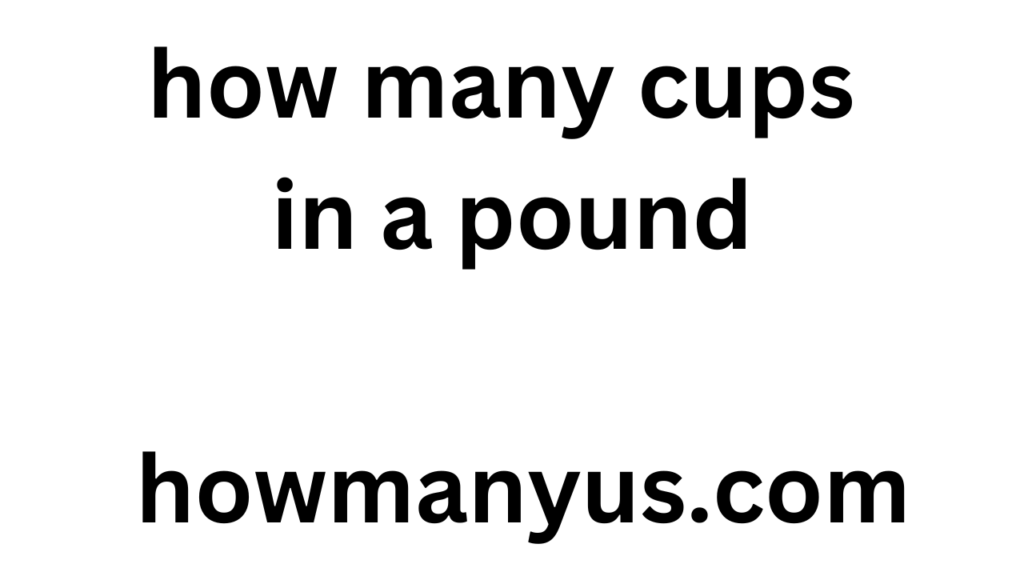how many cups in a pound

how many cups in a pound: The conversion of pounds to cups isn’t always straightforward because it depends on what substance you’re measuring. The density and composition of the substance affect how much space it occupies. For example, a pound of feathers will take up more space than a pound of lead. However, for common cooking ingredients like flour, sugar, and water, there are general approximations that can be used.
Let’s break it down:
- Flour: A pound of all-purpose flour is generally considered to be about 3 1/3 to 3 1/2 cups when sifted. However, if the flour is packed, it might be closer to 4 cups. Keep in mind that the method of measuring (scooping vs. spooning and leveling) can also affect the volume.
- Granulated Sugar: Granulated sugar is denser than flour, so a pound of it will occupy less space. It’s approximately 2 1/4 to 2 1/2 cups.
- Water: Water has a standard density, so a pound of water is equivalent to about 2 cups.
how many cups in a pound: Remember, these are approximations. Different sources might provide slightly different values based on how tightly packed the ingredient is or how accurately it’s measured. Additionally, specialty flours or sugars might have different densities, affecting the conversion.
how many cups in a pound: When precise measurements are crucial, especially in baking, it’s best to use a kitchen scale for accuracy. This ensures consistency in your recipes, especially when dealing with sensitive recipes like those for bread or pastries. Professional bakers often prefer weighing ingredients because it’s more reliable than volumetric measurements.
how many cups in a pound: If you don’t have a scale, it’s helpful to keep in mind these rough estimates. They can give you a good starting point for your recipe, but always be prepared to adjust based on the actual consistency of your ingredients.

1 Answer